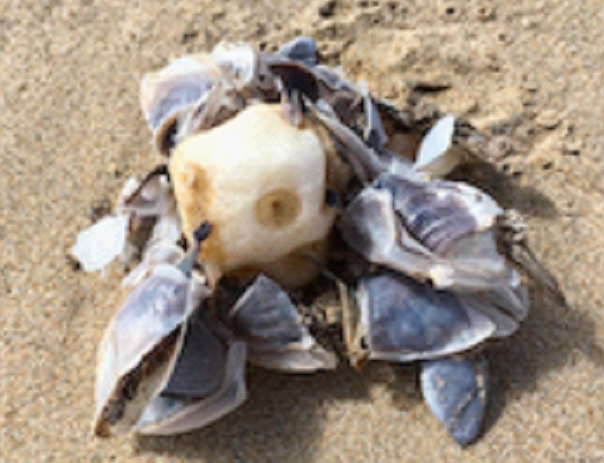An exciting diversion from the plant kingdom came our way recently thanks to Angair member Rebecca Hosking who had found a colony of Buoy Barnacles, Dosima fascicularis, washed up on Fairhaven Beach earlier in the year.
 Buoy Barnacle
Buoy Barnacle
After an initial examination of this fascinating aggregation of crustaceans, we placed dissected sections of the float under the microscope and were not surprised to see a structure resembling expanded polystyrene foam. This is the only barnacle species which produces its own gas-filled float (thought to be carbon dioxide), one float sometimes forming aggregations of many individuals, as we observed.
 Buoy Barnacle float
Buoy Barnacle float
It is interesting to note that the Buoy Barnacles are not reliant on producing their own float, they can also attach themselves to both non-living and living matter found in the ocean, for example plastic, driftwood or seaweed, as well as turtles and sea snakes.
Ref. https://en.wikipedia.org>wiki>Dosima.
Gail Slykhuis